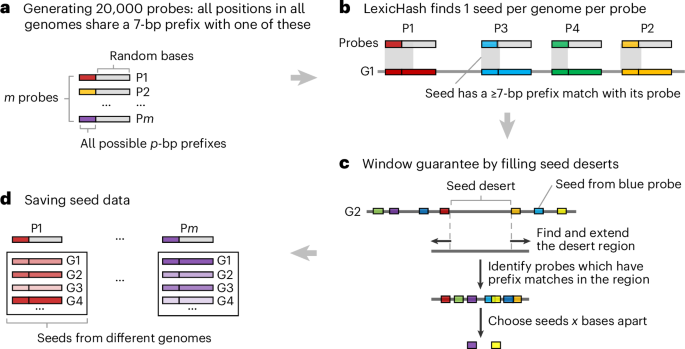A first-of-its-kind at-home test can reveal whether a person suffers from endometriosis, a condition that leaves patients suffering from debilitating pain and without a diagnosis for up to a decade.
Endometriosis is a condition that causes tissue similar to the lining of the uterus, or endometrium, to grow outside the uterus. It affects at least 11 percent of American women, more than 6.5 million.
This tissue thickens and breaks down, but because it grows outside the uterus, there is no way for it to the leave body like typical lining does in blood during menstruation. It becomes trapped and leads to the formation of cysts.
It often causes damage to the ovaries, fallopian tubes and the tissue lining the pelvis and can cause extreme menstrual pain, pain during sex, excessive bleeding, fatigue, diarrhea, constipation and fertility problems.
Typically, it takes about a decade for doctors to diagnose endometriosis because of misdiagnosis, stigma and lack of access to proper healthcare – which can leave many women in excruciating pain for years.
In many cases, doctors conduct a laparoscopy to diagnose endometriosis, which involves inserting a small camera in the body to find the extra tissue near the pelvis, taking a sample and testing it for confirmation.
Once a diagnosis is made, potential treatments include birth control pills to stop the menstrual cycle or hormonal medication. As of now, there is no long-term treatment or cure for endometriosis.
However, researchers at the Pennsylvania State University have now developed a new minimally invasive test patients can do themselves that can detect a biomarker for the disease in period blood and get a diagnosis – and start treatment – years earlier.

A first-of-its-kind pregnancy-like at-home test can reveal whether you suffer from endometriosis
Developed by Dr Dipanjan Pan, a Dorothy Foehr Huck & J. Lloyd Huck Chair Professor in Nanomedicine at the university, and his team, the at-home test offers up a diagnosis with nearly five times more accuracy than a laparoscopy in just 10 minutes.
Dr Pan explained to Newsweek: ‘This is the first time we have a proof of principle pregnancy-like test that shows one can collect menstrual blood and run it in the privacy of home and obtain the results in 10 minutes.’
He noted that menstrual blood and tissue that is shed from the uterus each month is often overlooked as medical waste but could help with earlier and more accessible endometriosis detection.

Dr Dipanjan Pan, a Dorothy Foehr Huck & J. Lloyd Huck Chair Professor in Nanomedicine at Penn State University
The team’s prototype device can detect HMGB1 – a protein involved in endometriosis development and progression – in period blood with 500 percent more accuracy and confirm whether a person is suffering from the condition, he explained.
To conduct the test, a sample of blood needs to be added to what looks like a Covid testing strip.
If any HMGB1 proteins are present, they bind to the antibodies in the blood and when tested, turn two stripes dark – giving a positive result for endometriosis.
In case of a negative result, only one stripe on the test darkens.
Dr Pan told Newsweek: ‘Currently, the only definitive [diagnostic] method is laparoscopic surgery [keyhole surgery, often invasive].
‘While menstrual blood is not yet a standard diagnostic tool for endometriosis, it’s an active area of research with the potential to revolutionize how the condition is diagnosed and monitored in the future.

For a positive test result for endometriosis, two stripes dark on the test (left) and in case of a negative result, only one stripe on the test darkens (right)
‘With our technology, we are hoping to democratize women’s health by providing a much-needed tool to track the onset or progression of this disease at the convenience and privacy of home.
‘We anticipate that combining this technology with clinical symptoms will allow for early detection or diagnosis of endometriosis in adolescents and women.’
Additionally, he also noted that the new test can help reduce the costs and time involved in scheduling and conducting a laparoscopy.
He added: ‘A recent study found that the average cost for a woman with endometriosis was around $30,000 per year.
‘This huge financial burden can be reduced [as well as the shame and isolation from stigma] if an accurate at-home test becomes available.
‘Our technology once developed, can reduce the time of diagnosis dramatically from years to minutes.
‘Technologies are being developed that claim to be ‘at-home’ tests for endometriosis, but in fact they are developing ways to collect samples for laboratories to test.’

Dr Pan also noted that with further testing and funding, he and his team intend to make the test accessible to people of all incomes.
Furthermore, he also hopes to integrate the tests into period pads, making it possible to discreetly and conveniently monitor HMGB1 levels this way at home too.
He said: ‘It is our goal to [eventually] provide the kits directly to the public, at a reasonable price point, so women can do the test at home and share the results with their doctors, who will offer diagnoses and advice about next steps.
‘We are looking at a couple of years of effort at this point. The team is actively looking for funding and partners to further develop the test. With funding, this timeline can be reduced in my opinion. ‘
Source link


